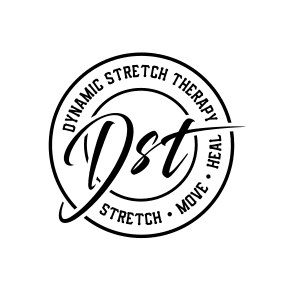Back pain has a way of slowing life down, even in a place as active and beautiful as Honolulu. Whether it’s surfing, hiking, or rolling on the mats for jiu-jitsu, it’s hard to enjoy the moment when your lower back feels stiff or sore. For many, this discomfort doesn’t appear overnight. It builds up from long hours sitting at a desk, repetitive motions, or lingering injuries.
The good news? Simple stretching can make a real difference. Gentle, targeted movements help ease tightness, restore mobility, and even keep future pain from creeping in.
In this article, we’ll explore how stretching can bring back pain relief, the types of stretches that work best, and advanced techniques like Fascial Stretch Therapy, cupping, and kinesiology taping that are available right here in Honolulu.
Common Causes of Back Pain
Back pain can affect anyone, no matter your age or lifestyle. Some of the most common reasons of back pain include:
- Sedentary jobs: Sitting for long hours tightens your hip flexors and weakens your back and abdominal muscles. This imbalance places stress on the lower spine.
- Sports injuries: Activities like Brazilian Jiu-Jitsu, surfing, or paddling can lead to strain in the lower back, buttock, and knees. Sudden twists, falls, or repetitive stress often trigger pain or discomfort.
- Aging: As you grow older, spinal discs naturally wear down, making you more prone to stiffness and chronic back pain.
- Stress and tension: Emotional stress often shows up physically as tight muscles in the back and neck.
Why Stretching Helps
Stretching exercises improve circulation, which brings oxygen and nutrients to sore areas. They also lengthen tight muscles, ease pressure on the lower spine, and improve range of motion in the joints. Regular stretching strengthens your posture by balancing the back and abdominal muscles.
A physical therapist often recommends stretching as part of a complete exercise program to relieve back pain. Combined with other treatments, stretching can reduce pain, prevent back injuries, and help you avoid invasive options like back surgery.
Stretching Basics for a Healthy Spine

Before diving into specific movements, it helps to understand the core principles that make stretching safe and effective for spinal health.
Key Principles of Safe Stretching
If you want stretching to truly support back health and reduce pain, it’s important to follow some essential guidelines that keep your body safe and your movements effective:
- Warm up first. Take a short walk, do gentle marching in place, or move your arms and legs lightly for a few minutes. This increases blood flow to your muscles and makes them more flexible before you stretch.
- Move slowly and with control. Avoid bouncing or jerking into a stretch, which can strain your muscles. Instead, ease into the position gradually and hold it for 20–30 seconds.
- Focus on steady breathing. Inhale deeply through your nose and exhale slowly through your mouth as you sink deeper into the stretch. Proper breathing helps release tension and allows your muscles to relax.
- Know your limits. Stretching should create a gentle pull, not sharp or stabbing pain. If you feel discomfort beyond mild tightness, stop right away and adjust the position.
Target Areas for Back Pain Relief
When creating a stretching routine, target more than just your lower back. Tightness in other areas often contributes to pain:
- Lower back muscles – stretching here relieves direct pain in the lumbar spine.
- Hips and glutes – tight hips pull on your spine and create stress in the low back.
- Hamstrings and legs – stiff hamstrings change how your pelvis tilts, causing pain.
- Upper back and shoulders – improving motion around the shoulder blades reduces stress on the spine.
Effective Stretches for Back Pain Relief in Honolulu
Incorporating the right stretches into your routine can ease tension, improve flexibility, and support a healthier spine. Here are some targeted options to try:
Lower Back Stretches

Two of the most effective easy stretches for lower back pain include:
- Child’s Pose (yoga pose): Kneel on the floor, sit back on your heels, and stretch your arms forward. This yoga pose can help flatten your back and release tension.
- Knee-to-Chest: Lie on your back, bend one knee, and pull it gently toward your chest with your hands. This stretch eases pain in the lumbar spine and buttock.
Hip and Glute Stretches
Tight hips are a hidden cause of back pain. Try:
- Piriformis Stretch: Lie on your back, cross one ankle over the opposite knee, and gently pull the bottom leg toward your chest.
- Seated Figure-Four: While seated, place one ankle on the opposite knee and lean forward slightly. This stretch helps with back and hip tightness.
Hamstring and Leg Stretches
Releasing your hamstrings reduces strain on your lower spine:
- Standing Hamstring Stretch: Place one heel on a low step, flatten your back, and bend forward at the hips.
- Reclined Hamstring Stretch with Strap: Lie on your back and use a strap to pull your leg upward. Keep your back flat on the floor.
Upper Back and Shoulder Stretches
Improving mobility in your upper spine and shoulders also relieves back and neck pain:
- Cat-Cow (yoga poses): On hands and knees, arch your back upward, then gently drop your belly down while lifting your head. This helps with motion in the spine.
- Seated Spinal Twist: Sit tall, cross one elbow over your opposite knee, and twist gently. This improves spinal mobility.
Advanced Stretching Methods at Dynamic Stretch Therapy
To help clients move better and feel lasting relief, we use specialized stretching methods and supportive therapies that go beyond traditional routines.
Fascial Stretch Therapy (FST)
Unlike basic stretches, FST works on the fascia, the connective tissue surrounding your muscles. By guiding your body through assisted stretches, FST helps you improve range of motion and relieve pain more effectively than stretching alone. Clients often feel results in fewer sessions compared to self-directed routines.
Complementary Techniques
At Dynamic Stretch Therapy, we combine advanced stretching with additional therapies that support recovery, mobility, and long-term back health:
IASTM Blading
Instrument-Assisted Soft Tissue Mobilization (IASTM) uses specialized tools to gently scrape the skin. This technique helps break down scar tissue and adhesions, restore normal tissue function, and reduce stiffness. It is especially effective for clients dealing with chronic tightness or limited mobility.
Muscle Flossing
Also known as tissue flossing, this method uses elastic compression bands wrapped around a muscle group while performing light movements. The technique temporarily restricts blood flow, then restores it upon release, improving circulation, mobility, and muscle recovery. It can help release tightness that regular stretching doesn’t reach.
Cupping Therapy
Using suction cups placed on the skin, cupping draws blood to the targeted area, promoting healing and reducing inflammation. It loosens stiff muscles, relieves tension in the back, and helps flush out toxins that may contribute to pain or discomfort.
Kinesiology Taping
Special elastic tape is applied to the skin to support muscles and joints without restricting movement. It can correct posture, reduce strain on sensitive areas, and provide pain relief while still allowing flexibility during daily activities.
Together, these treatments enhance the effects of stretching, offering lasting relief for individuals with chronic back pain, sports injuries, or recurring muscle imbalances.
Lifestyle Integration for Long-Term Relief
To make real progress, you need to pair advanced therapy with simple, sustainable daily habits.
Daily Habits in Honolulu’s Active Environment
Living in Hawaii means balancing work with an active lifestyle. To protect your back:
- Take stretch breaks every 30–60 minutes if you sit at a desk.
- Do post-surf or post-jiu-jitsu recovery stretches to reduce pain and tightness.
- Practice mindful posture. Keep your back tall and shoulders aligned.
Supporting Factors
Stretching works best when combined with healthy habits:
- Drink water to keep muscles flexible.
- Focus on consistency over intensity. A few minutes of daily stretching is better than one long session per week.
- Always listen to your body’s limits. If stretching causes pain or discomfort, stop and talk to your doctor.
When to Seek Professional Help in Honolulu
Stretching can ease mild to moderate back pain, but some situations need professional care. If you experience chronic back pain, numbness, tingling, or weakness, stretching may not be enough. These symptoms can signal spinal disc issues or nerve involvement.
Dynamic Stretch Therapy offers individualized plans tailored to your condition. With certification in FST and advanced methods, we help clients avoid invasive treatments and regain full mobility safely.
Why Choose Dynamic Stretch Therapy in Honolulu
- Expertise: Certified in Fascial Stretch Therapy, cupping, kinesiology taping, and more.
- Local roots: Founded by someone who healed his own Brazilian Jiu-Jitsu injuries through stretch therapy.
- Trusted results: Athletes and everyday clients rely on our programs to relieve back pain and improve mobility.
- Commitment: Helping Honolulu residents move without pain and improve their quality of life.
Conclusion: Move Freely, Live Fully
Back pain doesn’t have to stop you from enjoying life in Honolulu. By practicing regular stretching exercises, focusing on your lower back, hips, and hamstrings, and seeking help when needed, you can reduce pain, improve range of motion, and prevent back problems in the future.
At Dynamic Stretch Therapy, we combine professional expertise with advanced techniques to help you live pain-free. Don’t let tight muscles or stiffness hold you back. Start your stretching routine today by scheduling a session with us.




